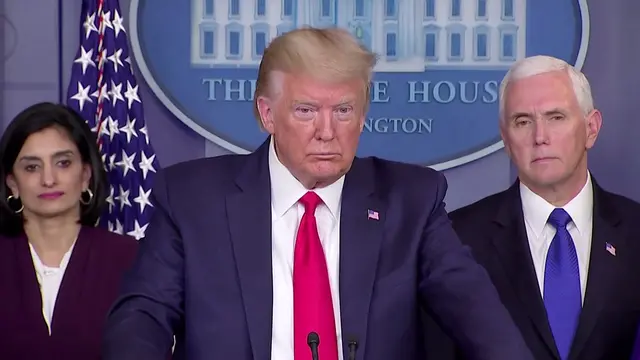By APD writer Ding Yi
The 2018 inter-Korean summit will be held in Panmunjom, a place along the border between the Democratic People’s Republic of Korea (DPRK) and South Korea where Korean Armistice Agreement was signed.
This will be the third time for the top leaders of the two Koreas to meet with each other after the 2000 and 2007 summits. In this case, what are they going to talk about in the summit?
Ending the State of War
The ongoing state of war between the DPRK and South Korea continues to destabilize the Korean Peninsula.
Although the Korean Armistice Agreement was signed in 1953, the article claiming “a political conference of a higher level of both sides be held by representatives appointed respectively to settle through negotiation the questions of the withdrawal of all foreign forces from Korea, the peaceful settlement of the Korean question” was never realized, indicating the state of war is yet to be ended.
DPRK leader Kim Jong Un and US President Donald Trump
In recent years, every time when there were rising tensions in the peninsula, the risk of war resulted from the uncertainty of the truce would be greatly enhanced.
For instance, the DPRK declared it would no longer be bounded to the truce in 2009 and 2010, and the DPRK even nullified the truce and said it was preparing for the war in 2013.
The uncertainty of the truce and the absence of a peace treaty are like a time bomb on the peninsula. Therefore, in this summit, it is very likely that both sides are willing to make an effort to end the ongoing state of war and sign a peace treaty afterwards.
Working for Denuclearization
The nuclear weapon and its deliveries owned by the DPRK are widely concerned by the international community. South Korea hopes that the DPRK could give up its nuclear weapons in order to realize the denuclearization of the peninsula. On addressing the issue of nuclear weapons in the DPRK, political blocs inside South Korea hold mixed opinions, some hawks are expecting to see the overthrowing of the regime.
However, Moon Jae-in’s administration abandoned that strategy, saying that “we do not wish for North Korea’s collapse, and will not work towards any kind of unification through absorption. Neither will we pursue an artificial unification.”
South Korean President Moon Jae-in, right, shakes hands with Japanese Foreign Minister Taro Kono prior to their talks at the presidential house on April 11
Besides, South Korea will “pursue the denuclearization of the Korean Peninsula that guarantees the security of the North Korean regime.” These propositions partially overlap with Kim Jong Un’s assertion of renouncing nuclear weapons in the preconditions of removing military threats and guaranteeing regime security. As the two sides have almost reached a consensus in guaranteeing regime security, can we expect both to go even further?
Planning High-Level Dialogues
Resuming routine high-level dialogues between the two governments, especially the regular meeting between the top leaders are likely to be discussed in the summit.
South Korean President Kim Dae-jung (L) links hands with DPRK leader Kim Jong-il (R) during a farewell luncheon at Baekhwawon State Guest House in Pyongyang on June 15, 2000.
In the 2000 summit between Kim Jong-Il and Kim Dae-jung, both sides agreed to make reciprocal visits by head of state, however, the second summit was not fulfilled until 2007.
The door for dialogue was even closed as tensions raised afterwards. Now in the context of a detente, will the DPRK and South Korea be able to seize the opportunity and construct routine mechanisms for high-level inter-government dialogues, in particular, the regular meeting between top leaders?
Promoting Economic and Cultural Cooperation
Economic cooperation and cultural exchanges were mentioned in the previous two summits, and probably in the incoming one. President Moon Jae-in proposed the “New Economic Map” in 2017. Three axes -- trans-East and trans-West Sea economic belts, and trans-border environmental and tourism belt -- would be set up in the form of a capital “H” on the Korean Peninsula along the west and east coast vertically, and across the military demarcation line horizontally.
Obviously, this economic roadmap, both aiming at revitalizing regional economy and laying economic foundation for future unification, demands the DPRK’s acceptance and cooperation in the summit. Besides, issues like family reunion and exchanges in science, education and other social undertakings should be on the agenda as well.
So far, it is very likely that this inter-Korean summit would make some achievements and exert a positive effect on the current situation. Two reasons acounting for that:
First, a successful inter-Korean summit is linked to the ensuing U.S.-DPRK summit. The incoming summit between the two Koreas is a preparatory meeting to some extent and can pave the way for the Trump-Kim meeting later. Thus, both the DPRK and South Korea are willing to cooperate at least in the short period.
Second, the incoming summit is different from the 2000 and 2007 summits because the previous two were held in the middle or late stage of South Korean presidential tenure, and some policies ended up with no results after government changes. But President Moon will keep in office till 2022 if everything goes well, still several years left for carrying out follow-up policies after the summit.
Ding Yi, Ph.D. candidate, School of International Relations and Public Affairs, Fudan University.
(ASIA PACIFIC DAILY)
 简体中文
简体中文

